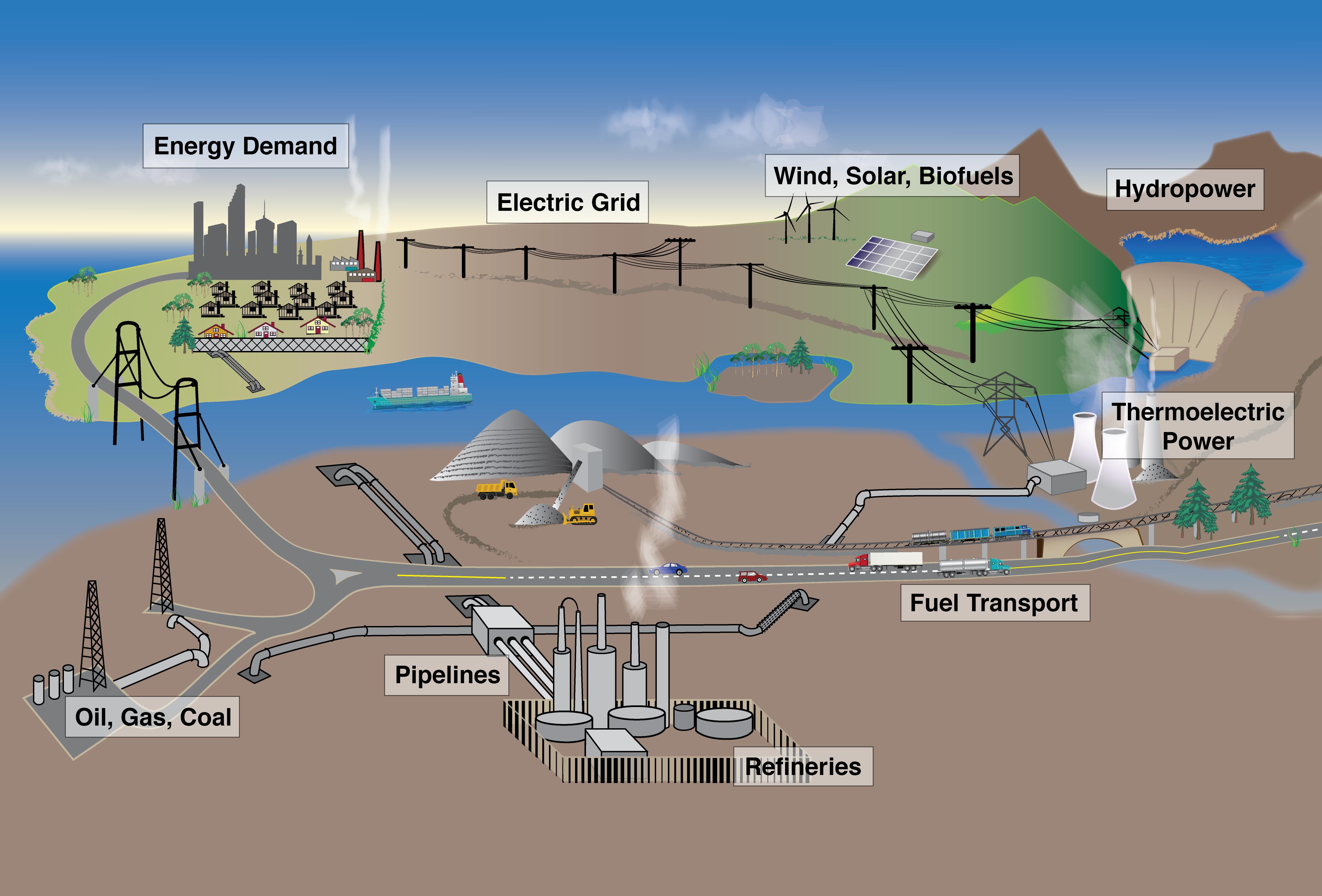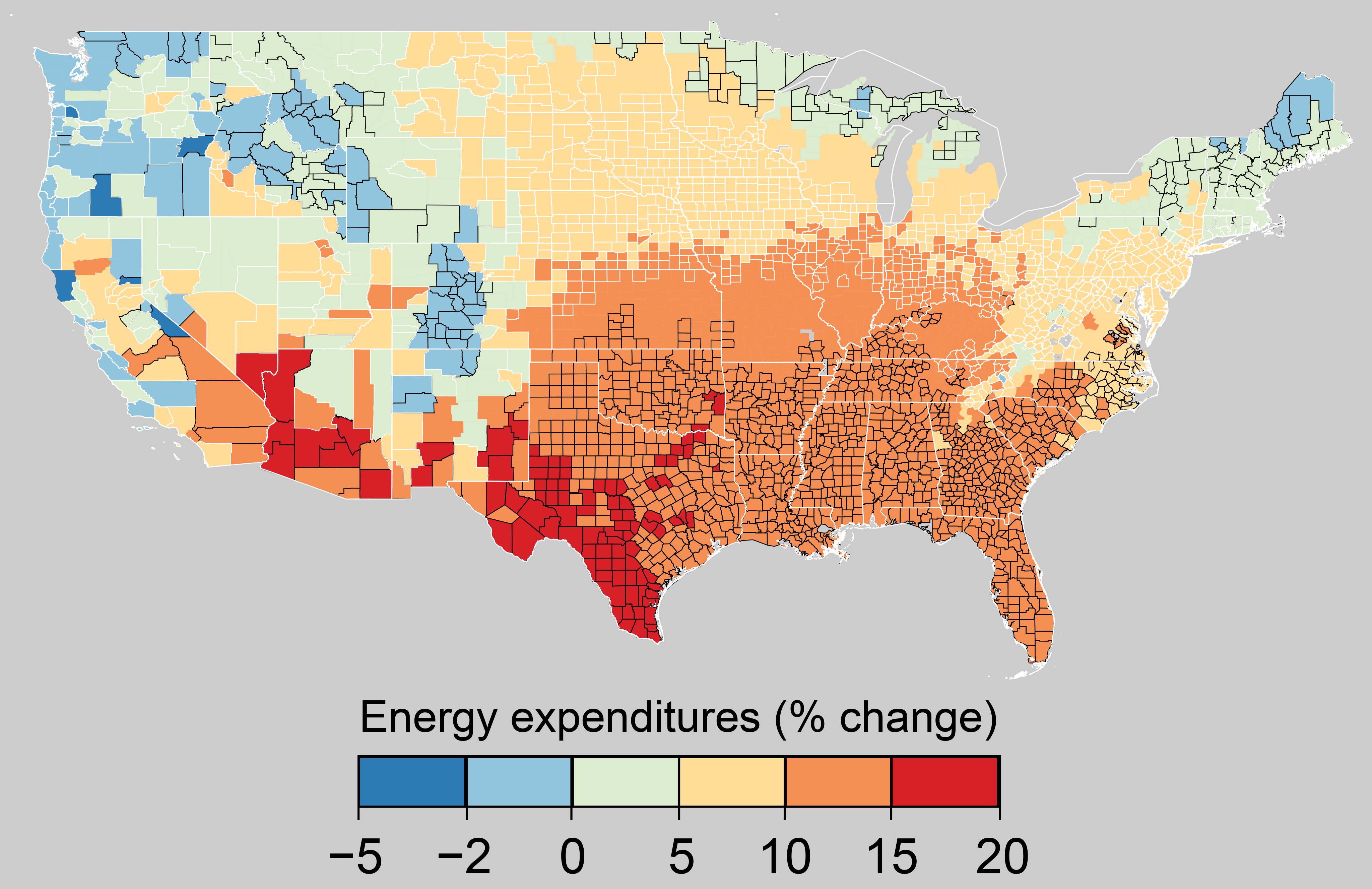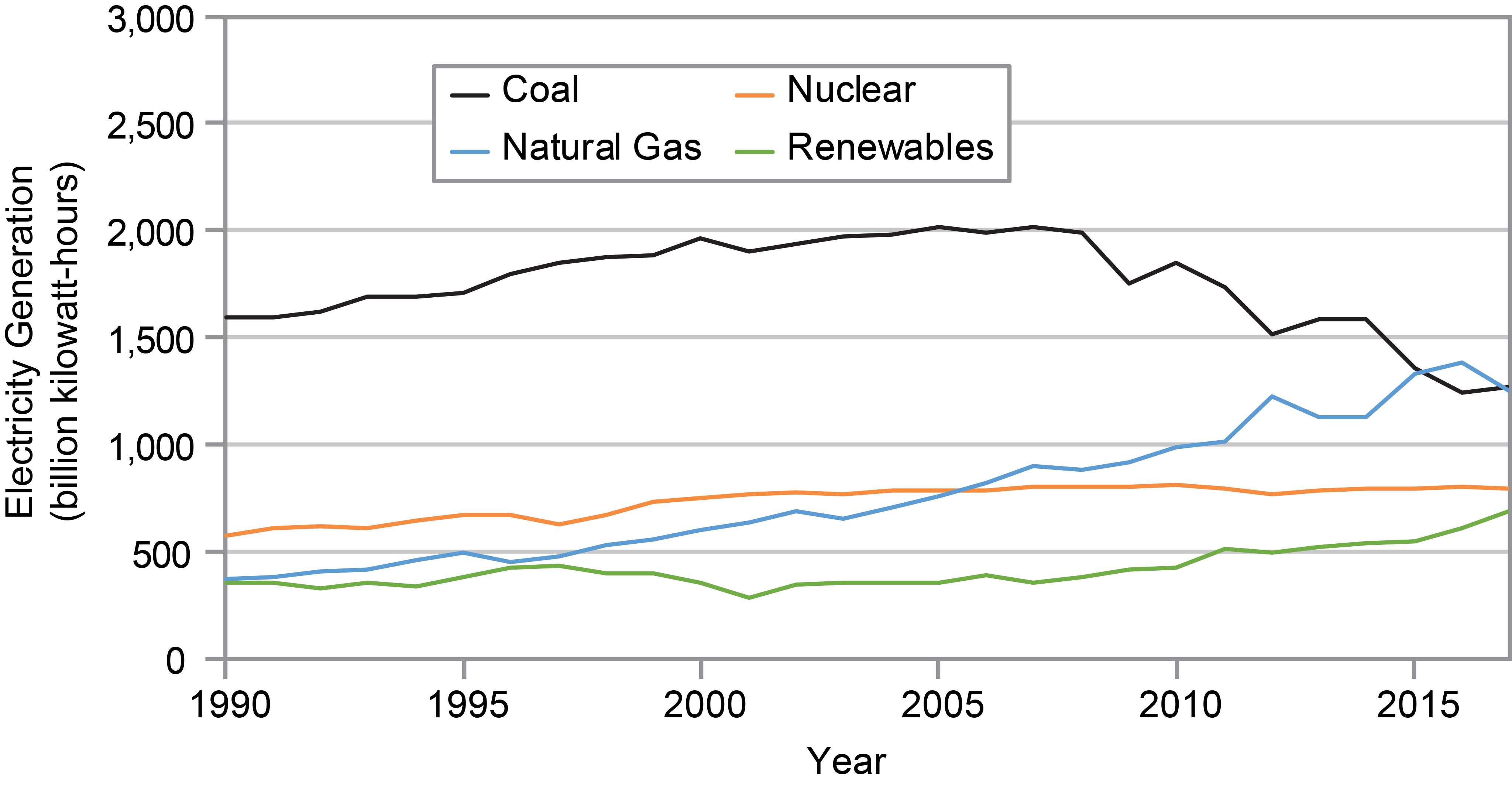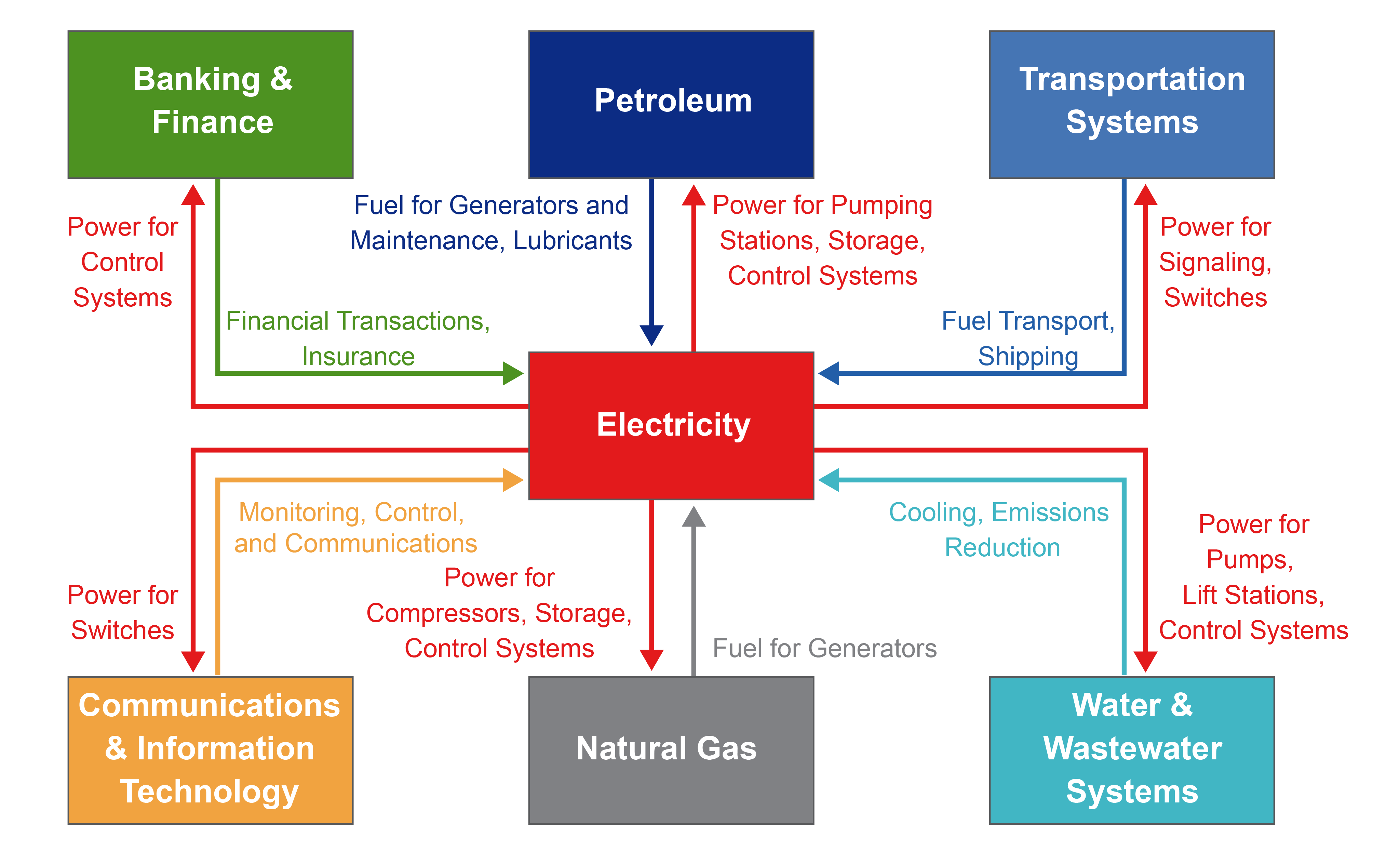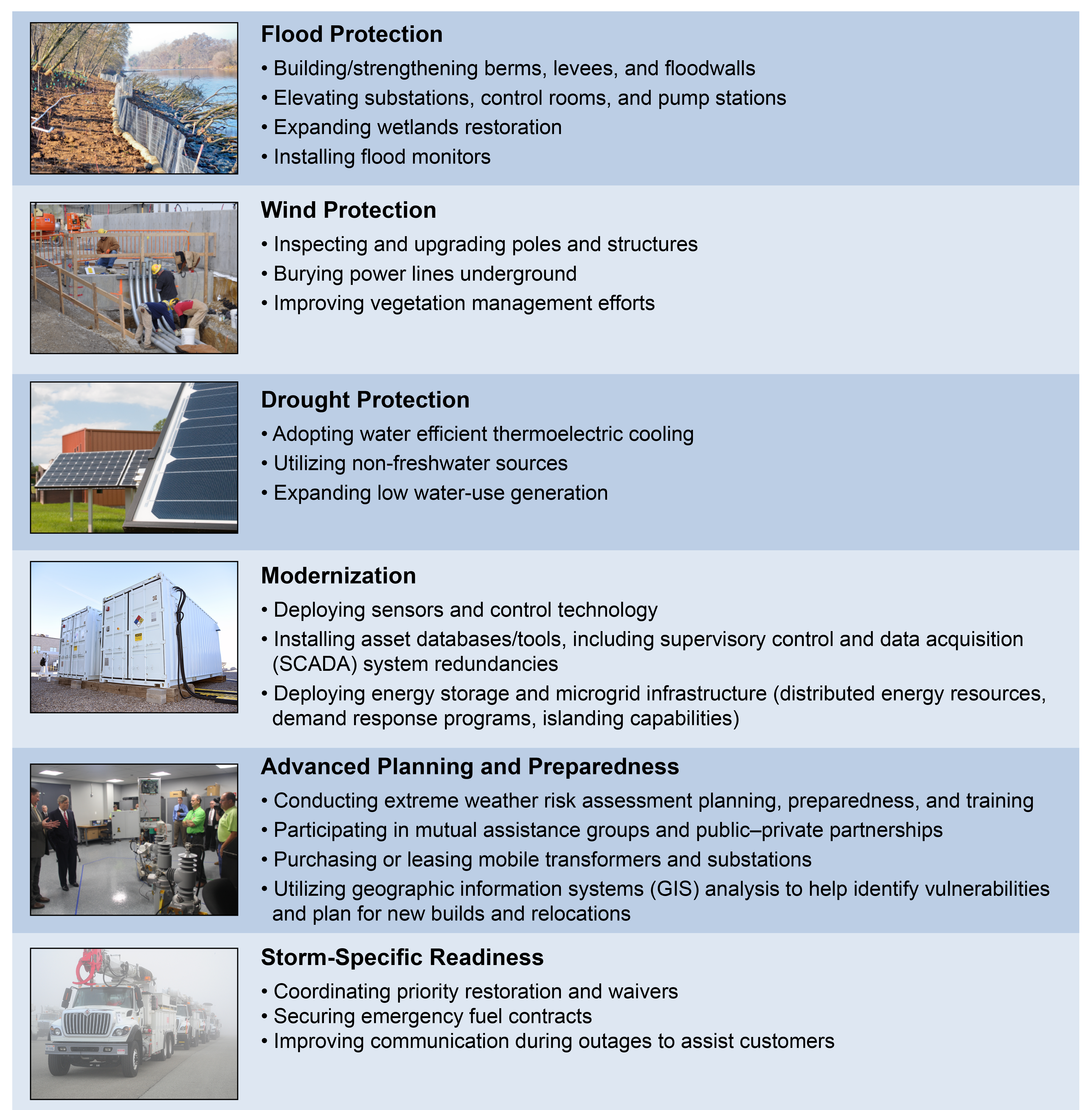We sought an author team that could bring diverse experience, expertise, and perspectives to the chapter. Some members have participated in past assessment processes. The team’s diversity adequately represents the spectrum of current and projected impacts on the various components that compose the Nation’s complex energy system and its critical role to national security, economic well-being, and quality of life. The author team has demonstrated experience in the following areas:
In order to develop Key Messages, the author team characterized current trends and projections based on wide-ranging input from federal, state, local, and tribal governments; the private sector, including investor-owned, state, municipal, and cooperative power companies; and state-of-the-art models developed by researchers in consultation with industry and stakeholders. Authors identified recent changes in the energy system (that is, a growing connectivity and electricity dependence that are pervasive throughout society) and focused on how these transitions could affect climate impacts, including whether the changes were likely to exacerbate or reduce vulnerabilities. Using updated assessments of climate forecasts, projections, and predictions, the team identified key vulnerabilities that require near-term attention and highlighted the actions being taken to enhance energy security, reliability, and resilience.
Key Message 1: Nationwide Impacts on Energy
The Nation’s energy system is already affected by
extreme weather events, and due to climate change,
it is projected to be increasingly threatened by
more frequent and longer-lasting power outages
affecting critical energy infrastructure and creating
fuel availability and demand imbalances (high
confidence). The reliability, security, and
resilience of the energy system underpin virtually
every sector of the U.S. economy (high
confidence). Cascading impacts on other critical
sectors could affect economic and national security
(high confidence).
Description of evidence base
The energy system’s vulnerability to climate change impacts is evidenced through two sources: 1) the historical experience of damage and disruption to energy assets and systems, using data and case studies from events such as Superstorm Sandy and Hurricanes Harvey, Irma, and Maria, as well as the 2011–2016 California drought, and 2) a growing base of scientific literature assessing and projecting the past and future role of climate change in driving damage and disruption to the energy sector. Federal government and international scientific efforts have documented the scope and scale of a changing climate’s effects on the U.S. energy system—factors that will need to be considered in long-term planning, design, engineering, operations, and maintenance of energy assets and supply chains if current standards of reliability are to be maintained or improved.1,2,3,15,23,29,85,86
This Key Message claims that damage and/or disruption to energy systems is more likely in the future. This claim is based on the following specific climate change projections and their expected impacts on energy systems:
higher maximum air temperatures during heat waves and associated impacts on energy generation, delivery, and load (very likely, very high confidence)3,53
higher average air temperatures and associated increases in energy demand for cooling (very likely, very high confidence)11,12,13,14,15,16,17,18,19,53
higher surface water temperatures and associated impacts on thermoelectric power generation (very likely, very high confidence)3,87
shifts in streamflow timing in snow-dominated watersheds to earlier in the year8 and associated impacts on hydropower generation (very likely, very high confidence)86,88
increased frequency and intensity of drought (very likely, high confidence)54 and associated impacts on biofuels production3
more frequent, intense, and longer-duration drought, particularly in snow-dominated watersheds in the western United States,54 and associated threat to hydropower production, oil and gas extraction and refining, and thermoelectric cooling3,21,22,24,88
increased wind intensity from Atlantic and eastern Pacific hurricanes (medium confidence)55 and associated impacts on coastal energy infrastructure3
increased rain intensity for hurricanes (high confidence) and increased frequency and intensity of heavy precipitation events (high confidence), including West Coast atmospheric river events (medium confidence),89 and associated impacts on energy infrastructure3
increased relative sea level rise (very high confidence)47 and associated risk of enhanced flooding of coastal infrastructure as well as inland energy infrastructure along rivers3
increased frequency and intensity of heavy precipitation (very likely)89 and associated impacts to inland flooding of energy assets3,15
increased frequency of occurrence of conditions that support the formation of convective storms (thunderstorms, tornadoes, and high winds)55 and associated damage to electricity transmission and distribution lines (low confidence)1,3
The effects of extreme weather on energy system infrastructure have been well documented by researchers and synthesized into several assessment reports produced by federal agencies.2,3,15,23 The link between extreme weather and power outages is strongest: extreme weather is the leading cause of power outages in the United States.2 Increased wind speeds and precipitation have been correlated with increased outage duration, and wind speeds have also been correlated with outage frequency.90 Claims regarding fuel shortages are also based on historical experience; Superstorm Sandy led to local fuel distribution shortages, while Hurricane Katrina led to fuel production and refining shortages with national impacts.3 The claim that energy system outages can increase energy prices, negatively affect economic growth, and disrupt critical services essential for health and safety is likewise substantiated by the historical experience of severe storms, flooding, and widespread power outages.23
Major uncertainties
The inability to predict future climate parameters with complete accuracy is one primary uncertainty that hinders energy asset owners, operators, and planners from anticipating, planning for, and acting on vulnerabilities to climate change and extreme weather. All climate change projections include a degree of uncertainty, owing to a variety of factors, including incomplete historical data, constraints on modeling methodologies, and uncertainty about future emissions. For some climate parameters, confidence in both the direction and magnitude of projected change is high, so expected impacts to the energy sector are well understood. For example, projected temperature changes across the United States uniformly indicate that the demand for cooling energy is projected to increase and the demand for heating energy is projected to decrease.8,15
However, confidence is generally lower for other climate parameters projections, making it difficult to understand and prioritize the risks associated with climate hazards and lowering confidence levels in related energy sector impacts. There is uncertainty in projections regarding changes in the frequency and intensity of hurricanes and convective storms, the magnitude and timing of sea level rise, the connection between projected changes in precipitation and the likelihood of droughts and flooding, and the potential increased seasonal variability in wind and solar resources. Hurricanes and convective storms represent major threats to energy infrastructure in general and to electricity transmission and distribution grids in particular.1,3 However, historical data for hurricanes and convective storms (including tornadoes, hail, and thunderstorms) are lacking and inconsistent over different time periods and regions, and they can be biased based on population density and shifting populations.55 Furthermore, for convective storms, most global climate models are not capable of modeling the atmosphere at a small enough scale to directly simulate storm formation.8 Projections of changes in sea level rise and impacts on coastal energy infrastructure are improving, but significant uncertainty regarding the magnitude of long-term sea level rise impedes energy system planners’ ability to make decisions about infrastructure with useful lifetimes of 50 years or more.47 Global climate models are also insufficient to project future hydrological changes, as these projections lack sufficient spatial and temporal resolution and lack detail about other factors important to local hydrology, including changes to soil, groundwater, and water withdrawal and consumption. A lack of hydrological projections increases uncertainty about water availability consequences for hydropower and thermoelectric power plants and oil and gas extraction.
Description of confidence and likelihood
Climate change is projected to affect the energy sector in many ways, but the overall effect of rising temperatures, changing precipitation patterns, and increases in the frequency and/or severity of extreme weather is to increase the risk of damage or disruption to energy sector assets and energy systems. The combined projection of increasing risk of damage or disruption is very likely, with high confidence.
Key Message 2: Changes in Energy System Affect Vulnerabilities
Changes in energy technologies, markets, and
policies are affecting the energy system’s
vulnerabilities to climate change and extreme
weather. Some of these changes increase reliability
and resilience, while others create additional
vulnerabilities (very likely, very high
confidence). Changes include the following:
natural gas is increasingly used as fuel for
power plants; renewable resources are becoming
increasingly cost competitive with an expanding
market share; and a resilient energy supply is
increasingly important as telecommunications,
transportation, and other critical systems are
more interconnected than ever.
Description of evidence base
Large-scale changes in the energy sector are primarily evidenced through the U.S. Energy Information Administration’s (EIA) data collection and analysis. EIA collects monthly and annual surveys from every U.S. power plant; findings include the types of fuel each plant uses.22 Several sources support claims that renewable technology deployment is growing while costs are falling: EIA data,22,25 National Renewable Energy Laboratory research,26 and multiple studies.27,28,30,32,33 The U.S. Department of Energy’s Quadrennial Energy Review1,2 and other reviews31 provide analysis that supports the growing integration of energy systems into other sectors of the economy.
Major uncertainties
Future changes in the energy system, and the effect on energy system vulnerabilities to extreme weather and climate change, are uncertain and will depend on numerous factors that are difficult to predict, including macroeconomic and population growth; financial, economic, policy, and regulatory changes; and technological progress. Each of these factors can affect the cost of technologies, the growth in energy demand, the rate of deployment of new technologies, and the selection of sites for deployment.
Description of confidence and likelihood
The reliable production and delivery of power enables modern electricity-dependent critical infrastructures to support American livelihoods and the national economy. There is very high confidence that a deepening dependence on electric power and increasing interdependencies within the energy system can increase the vulnerabilities and risks associated with extreme weather and climate hazards in some situations (very likely, very high confidence).
There is very high confidence that many trends in the changing energy system are very likely to continue and that changes will have potential effects on reliability and resilience. A primary factor affecting the increased use of natural gas and the deployment of renewable resources is the relative price of these generation sources. Existing proven resources of natural gas are sufficient to supply current demand for several decades.91 Renewable technologies are very likely to continue falling in price, as manufacturers continue to improve their processes and take advantage of economies of scale.92 The degree of interconnection of critical systems is also very likely to increase. The continued deployment of smart grid devices, microgrids, and energy storage will likely provide multiple reliability and resilience benefits.2
Key Message 3: Improving Energy System Resilience
Actions are being taken to enhance energy security,
reliability, and resilience with respect to the effects
of climate change and extreme weather (very high
confidence). This progress occurs through improved
data collection, modeling, and analysis to support
resilience planning; private and public–private
partnerships supporting coordinated action; and both
development and deployment of new, innovative energy
technologies for adapting energy assets to extreme
weather hazards. Although barriers exist, opportunities
remain to accelerate the pace, scale, and scope of
investments in energy systems resilience (very high
confidence).
Description of evidence base
Several entities have identified evidence for the planning and deployment of resilience solutions in the energy sector. Support comes from both industry and federal agencies, including the U.S. Department of Energy (DOE), the U.S. Environmental Protection Agency (EPA), and the Department of Homeland Security (DHS).3,37,38,39,40,41,42 For example, the DOE’s recent efforts, reflected in the Quadrennial Energy Review1,2 and the Quadrennial Technology Review,45 examine how to modernize our Nation’s energy system and technologies to promote economic competitiveness, energy security and reliability, and environmental responsibility. Through the Partnership for Energy Sector Climate Resilience, the DOE and partner utilities provide examples of plans and implementation of resilience solutions, as well as barriers to expanded investments in resilience.3,76 This Key Message gains further support from the EPA’s work with industry and local and state governments through its Creating Resilient Water Utilities program,93 as well as from the collaboration of the DHS with private sector critical infrastructure owners and operators through its National Infrastructure Protection Plan Security and Resilience Challenge.94 In addition, a growing constituency of cities, municipalities, states, and tribal communities are dedicating resources and personnel toward identifying, quantifying, and responding to climate change related risks to energy system reliability and the social services that depend on those systems.3,73 For example, the Rockefeller Foundation’s 100 Resilient Cities and C40 Cities are both networks of the world’s cities committed to addressing resilience. These coalitions, including multiple U.S. cities, support cities in their efforts to collaborate effectively, share knowledge, and drive meaningful, measurable, and sustainable action on resilience.74,75
Major uncertainties
The most significant uncertainties affecting future investments in climate resilience are related to evaluating the costs, benefits, and performance of resilience investments—and the costs of inaction. To make informed investments, decision-makers need standardized cost–benefit frameworks and methodologies, as well as reliable, high-resolution (temporal and spatial) climate change projections of critical weather and climate parameters.1,2,3,76
The high complexity of the energy system introduces uncertainty in whether particular actions could yield unintended consequences. Using the examples above, energy storage, distributed generation, microgrids, and other technologies and practices can contribute to resilience. However, unless evaluated in a systematic manner, the adoption of technologies and practices will likely lead to unintended consequences, including environmental (such as air quality), economic, and policy impacts.
Significant uncertainty is also found in the future pace of mitigation efforts that will, in turn, influence the need for resilience investments. Some level of climate change will continue, given past and current emissions of heat-trapping greenhouse gases. However, without an effective mitigation strategy, the need for additional adaptation and resilience investments becomes greater. Uncertainty about the rate of stabilizing and reducing greenhouse gas emission levels (mitigation) compounds the challenge of characterizing the magnitude and timing of additional resilience investments.
The pace of development and deployment of resilient cost-effective energy technologies are also uncertain and will likely be critical to implementing resilience strategies at scale. These technologies will likely include improvements in areas such as energy storage, distributed generation, microgrids, and cooling for thermoelectric power plants.1,2,3,31,76
Description of confidence and likelihood
There is very high confidence that many of the technologies and planning or operational measures necessary to respond to climate change exist and that their implementation is in progress.29 Although federal, state, local, and tribal governments and the private sector are already responding, there is very high confidence that the pace, scale, and scope of combined public and private efforts to improve preparedness and resilience of the energy sector are likely to be insufficient, given the nature of the challenge1,2,3,29,31 presented by a changing climate and energy sector.
